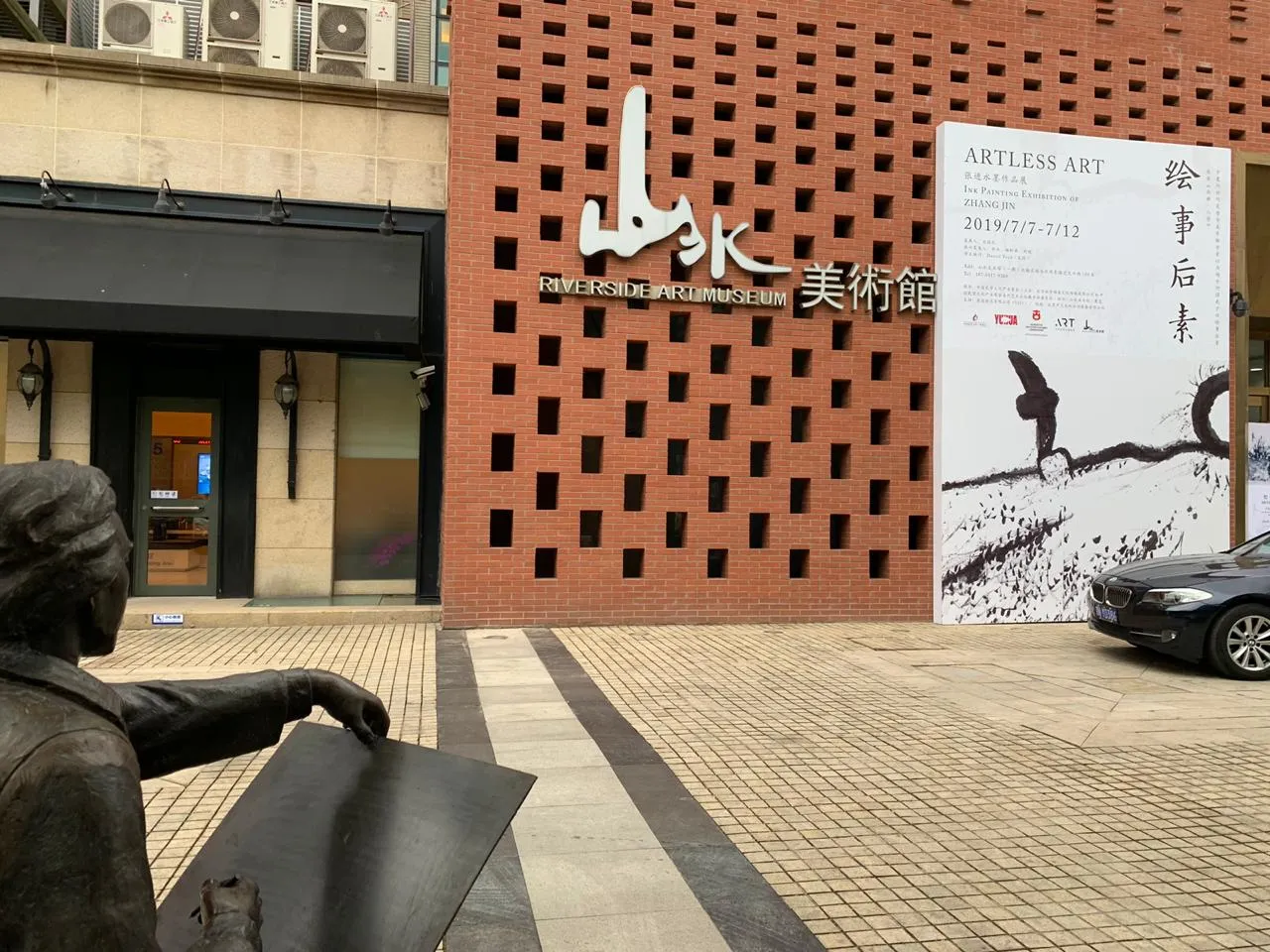Interview with Zhang Jin, Pioneer of Contemporary Chinese Ink
.art speaks to Zhang Jin, renowned for his unique ability to incorporate Western learning into the framework of the Chinese intellectual tradition.


Zhang Jin was born in 1958 in Beijing. In the 1980s, he came to be one of the pioneers of Chinese contemporary ink. Today, Jin is known for his avant-garde, minimalist, and freehand style. At first glance, some of his works look almost child-like but, in reality, Jin is incredibly proficient, both in his practical skills as well as in his artistic approach. Credited with putting Chinese ink on an international stage, his works exhibit the perfect combination of ‘traditionalism’ and ‘modernism’, deeply rooted in traditional Chinese art and culture but expressing an understanding and an ability to apply Western sources into his art. A firm believer in the importance of cultural diversity in the age of globalization, he encourages Chinese artists to follow a path that is uniquely their own. Hard-to-achieve, honest simplicity is at the root of his artistic language.
.art spoke to Zhang Jin about his childhood, his artistic philosophy, and more.
Tell us about your path to ink and wash painting?
When I was five years old, I studied calligraphy with my grandfather Zhang Yuji. At the age of 12, I began studying the traditional landscape paintings of Shen Zhou, Huang Zijiu, and Jiezi Yuan with my grandfather Shen Wentao in Shanghai. I then went on to study Wang Shigu’s landscape painting with Mr. Chen Yao.
At some point in your childhood, you and your family moved from Beijing to live in an old chapel in Shaanxi City. How was that experience for you?
At the beginning of the Cultural Revolution, I lived with my parents in a church in Chenggu Gulouba, southern Shaanxi. The dark atmosphere left a mysterious memory in my childhood.
Your philosophy is based on understanding the West and bringing that culture into your art while acknowledging the differences. What about Western artists – do you feel that they manage to understand Asian philosophy when they integrate it into their artwork?
My artistic concept and philosophy originate in China: where I use Chinese sources as the fundamental framework to integrate learnings from Western sources. I think that Western artists do it the other way around, where they use their own cultural concept and philosophy as the foundation to integrate Asian or Chinese philosophy.

Today, you mostly work with black ink but there are quite a few colour creations on your Artnet auction database. Did you leave colour intentionally?
Black and white is the philosophy of China, and colour is rooted in the world of the West. Looking at colour from the Chinese perspective exists within the level beneath Yin and Yang.
The West is trying its best to integrate mindfulness into daily life – Tao and other Eastern philosophy principles are very trendy right now.
How .ART Domains Are Taking Artists Online Read More How to register a business email on .ART Read More Portfolio on .ART: How to showcase your creative work in 4 simple steps Read MoreWhat would be your advice on living in harmony with yourself and at peace with the world?
Harmony and unification between men and nature/world (following the natural principles) applied on a personal level, a cultural level, and on the level of mankind.
Your “Angry birds” paintings – are they humorous? Why did you chose that particular aspect of Western culture to reflect on?
All people have experienced the emotion of anger; the work was used with the purpose of empathy and resonation. Cultural symbols are just a medium of artistic expression, and there was no other consideration.
What would you say is the specificity of the Chinese art market?
Deception, hype, and driven by profit; it is a huge but rather immature market.
What piece of advice would you give your 20-year-old self?
Break the status quo; liberate yourself; innovate new art forms.
Find out more: jin.art






